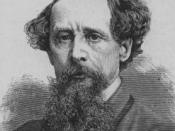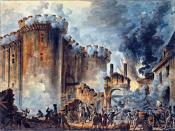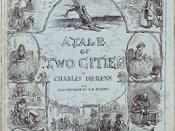The scientific theory of evolution states that humans evolved from apes, therefore we are all, or once were animals. While some religious people choose to ignore this notion, Charles Dickens embraces it in his literary masterpiece, "A Tale of Two Cities". During the French Revolution, inequality was rampant and became the basis of the continuous cycle of oppression. In Charles Dickens' "A Tale of Two Cities", animal imagery emphasizes the seemingly never-ending cycle of oppression while establishing that the only way to break the cycle is to possess human compassion.
The cycle of oppression begins when one group dominates another, creating inequality. In the stages preceding the Revolution, the peasants are greatly oppressed by the aristocracy. The lower classes have been told so many times that they are "common dog[s]" (405) that they are starting to believe it is the truth. As a whole, they lack the bravery to stand up to the ongoing abuse, "So cowed was their condition, and so long and hard their experience of what such a man could do to them, within the law and beyond it, that not a voice or a hand, or even an eye was raised."
(137). The peasants are so terrified of the upper classes and the harm they could potentially inflict upon them, that they accept the cruelty and abuse. The narrator describes the peasants as cows, which are generally obedient creatures. The abuse of the poor by the aristocracy is portrayed through animal imagery by describing the peasants as obedient animals.
With their unsympathetic ways, the aristocracy is the oppressor in this vicious cycle of oppression. Even before the French Revolution can officially begin the upper classes waste no time walking all over the peasants and terrorizing them in any way possible. The aristocrats are predators with...


